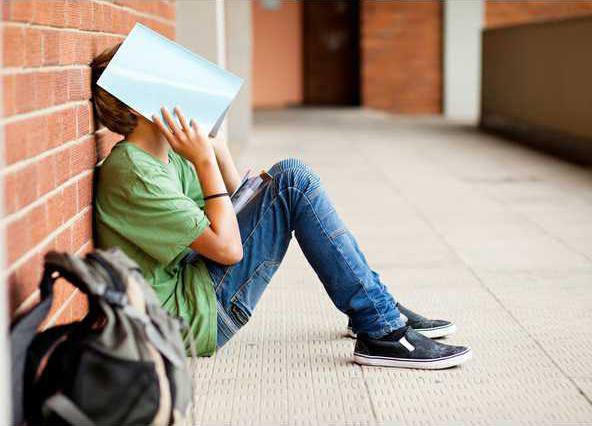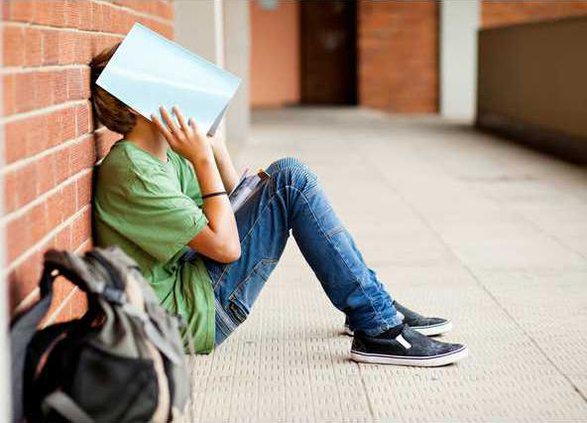The number of homeless teens attending school in the U.S. has doubled since 2006-07 to 1.3 million in 2013-14, and most of them are either minorities or members of the LGBTQ community, according to a new report by Civic Enterprises and Hart Research Associates.
Civic Enterprises, a public policy and strategy firm that focuses on public education, worked with Hart Research Associates to survey 158 students who were homeless at some point in middle or high school and interviewed 44 currently homeless youth. They also interviewed state coordinators and federal liaisons.
The survey included kids who were not runaways, but whose entire families were homeless.
According to Grad Nation's summary of the study, homeless students have trouble staying and performing well in school and making personal connections with their teachers and peers, the report stated. They also struggle with learning disabilities and emotional difficulties these negative effects deepening the longer the student remains homeless.
The authors of the study said that while student homelessness is a disruptive problem, schools are in the best position to solve it. "Students spend a signficant portion of their day in school and as a result, schools can offer these students a safe and consistent place to study and access to caring adults who can help them navigate some of the challenges they face. In an otherwise chaotic time of homelessness, schools can be pillars of stability," the study stated.
The report noted that the public school system has the tools to help through the Every Student Succeeds Act, passed in 2015. The act strengthens the McKinney-Vento Homeless Assistance Act through provisions that push for outside involvement to help homeless students succeed. The act, which takes effect int he 1016-17 school year, aims to increase the visibility of homeless and other disadvantaged groups who are often overlooked by the public school system.
According to NPR, the ESSA requires school districts to perform outreach to homeless students through public notices of homeless student rights and reporting homeless student graduation rates to the state. The ESSA will also allow teacher intervention to encourage college and career readiness.
State coordinators and McKinney-Vento school liaisons interviewed for the report said student homelessness is likely undercounted and remains an invisible yet disruptive problem.
"I discovered homelessness wasn't on our radar screen and it wasn't on others' radar screens, not withstanding this 100 percent increase," John Bridgeland, a co-author of the report, told NPR.
According to the study, only five states, including Colorado, Kansas, Virginia, Washington and Wyoming, have reported high school graduation rates for homeless students.
The Atlantic's coverage of the report mentioned many kids are afraid to identify themselves as homeless because they fear they would be taken away from their parents by Child Protective Services. Additionally, many students who frequently changed living situations with different friends and family members may not even categorize themselves as being homeless.
Civic Enterprises, a public policy and strategy firm that focuses on public education, worked with Hart Research Associates to survey 158 students who were homeless at some point in middle or high school and interviewed 44 currently homeless youth. They also interviewed state coordinators and federal liaisons.
The survey included kids who were not runaways, but whose entire families were homeless.
According to Grad Nation's summary of the study, homeless students have trouble staying and performing well in school and making personal connections with their teachers and peers, the report stated. They also struggle with learning disabilities and emotional difficulties these negative effects deepening the longer the student remains homeless.
The authors of the study said that while student homelessness is a disruptive problem, schools are in the best position to solve it. "Students spend a signficant portion of their day in school and as a result, schools can offer these students a safe and consistent place to study and access to caring adults who can help them navigate some of the challenges they face. In an otherwise chaotic time of homelessness, schools can be pillars of stability," the study stated.
The report noted that the public school system has the tools to help through the Every Student Succeeds Act, passed in 2015. The act strengthens the McKinney-Vento Homeless Assistance Act through provisions that push for outside involvement to help homeless students succeed. The act, which takes effect int he 1016-17 school year, aims to increase the visibility of homeless and other disadvantaged groups who are often overlooked by the public school system.
According to NPR, the ESSA requires school districts to perform outreach to homeless students through public notices of homeless student rights and reporting homeless student graduation rates to the state. The ESSA will also allow teacher intervention to encourage college and career readiness.
State coordinators and McKinney-Vento school liaisons interviewed for the report said student homelessness is likely undercounted and remains an invisible yet disruptive problem.
"I discovered homelessness wasn't on our radar screen and it wasn't on others' radar screens, not withstanding this 100 percent increase," John Bridgeland, a co-author of the report, told NPR.
According to the study, only five states, including Colorado, Kansas, Virginia, Washington and Wyoming, have reported high school graduation rates for homeless students.
The Atlantic's coverage of the report mentioned many kids are afraid to identify themselves as homeless because they fear they would be taken away from their parents by Child Protective Services. Additionally, many students who frequently changed living situations with different friends and family members may not even categorize themselves as being homeless.








